#Eugenio Cajes
Text



Cornelis Cornelisz van Haarlem, The Fall of Titans (1588-90)
Guido Reni, The Fall of Giants (anonymous copy, late 17th c.)
Eugenio Cajes, The Fall of the Rebel Angels (1605)
Statens Museum for Kunst, Copenhagen
#art#painting#art history#fall of titans#fall of giants#titans#giants#fallen angels#male nudity#mannerism
4 notes
·
View notes
Photo

The Fable of Leda by Eugenio Cajés (1604)
#eugenio cajes#art#paintings#fine art#17th century#17th century art#baroque#baroque art#painting#spanish artist#spanish art#mythology#roman mythology#roman legend#leda and the swan#leda#jupiter#zues#classic art
354 notes
·
View notes
Photo
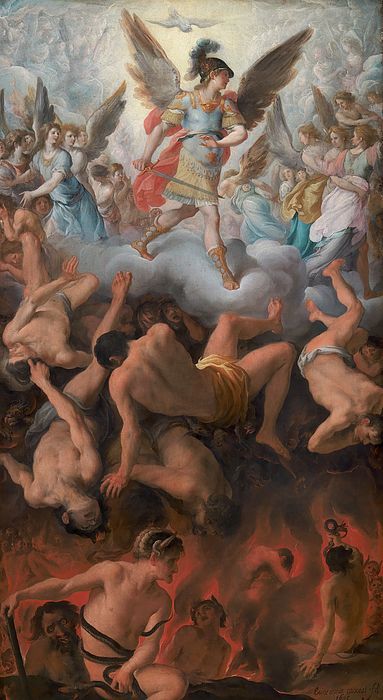
“The Fall Of The Rebel Angels” by Eugenio Cajes.
14 notes
·
View notes
Text
Mirra, kadzidło i złoto czyli adoracja, pragnienie i zachwyt.
Mirra, kadzidło i złoto czyli adoracja, pragnienie i zachwyt.
Złoto dla Króla, kadzidło dla najwyższego Kapłana i mirra, najcenniejsze zioło wschodu, ale najbardziej gorzkie.
Bardzo pięknie mówił dzisiaj o pragnieniu Boga papież Franciszek. Słuchałam go z zainteresowaniem. Po raz pierwszy mówił z taką mocą i zachwytem. Mówił o mędrcach, którzy pragnęli bo wpatrywali się w niebo. Byli pełni odwagi i wierzyli, że niebo jest stokroć bardziej zachwycające od…

View On WordPress
#Carlo Maratta#Diego Velazquez#Ermitaż#Eugenio Cajes#Francesco Rizi#Hermitage#Hieronimus Bosch#Hugo van der Goes#Jacoppo Bassano#Juan Bautista Maino#Louis de Morales#Muzeum Prado#Paolo Veronese#Peter Paul Rubens#Rembrandt#Rubens#Tycjan Vecelli
1 note
·
View note
Photo

Eugenio Cajés
Saint Raymond Nonnatus Being Nourished by the Angels, c. 1630
Saint Raymond Nonnatus (Spanish: San Ramón Nonato) was a saint from Catalonia (1204–1240). His surname (Latin: Nonnatus, "not born") refers to his birth by Caesarean section, his mother having died during childbirth. He is the patron saint of childbirth, midwives, children, pregnant women and priests who want to protect the secrecy of confession.
#Eugenio Cajes#Saint Raymond Nonnatus#angels#religion#catholicism#history#Baroque#art history#17th century#Spain#art
11 notes
·
View notes
Photo
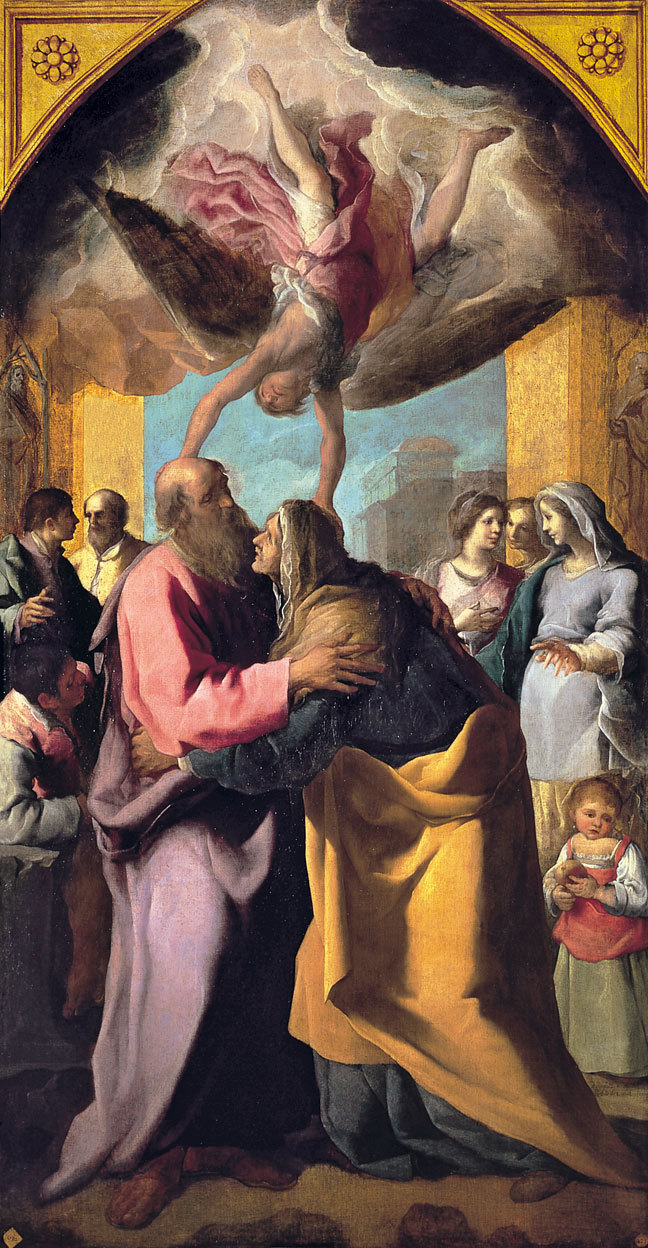
Eugenio Cajés
Saint Joachim and Saint Anne Meeting at the Golden Gate (c.1605)
Museo de la Real Academia de Bellas Artes de San Fernando, Madrid
#Eugenio Cajes#Saint Joachim#Saint Anne#love#Bible#New Testament#religion#catholicism#history#17th century#Baroque#art history#Spain#angels#Meeting at the Golden Gate#art
33 notes
·
View notes
Photo

Eugenio Cajés
The Fall of the Angels (1605)
Statens Museum for Kunst, Copenhagen
#Eugenio Cajes#Saint Michael#Holy Spirit#angels#Satan#religion#catholicism#history#Baroque#17th century#art history#Spain#art
52 notes
·
View notes
Photo

Eugenio Cajés
Triumph of the Cross (c. 1613-34)
The steep perspective of the cross and the suggestion of heaven's spatial infinity indicate that Eugenio Cajés probably made this square drawing as a preparatory study for a ceiling painting, probably in a chapel dedicated to the cross. In his late work, Cajés characteristically employed these graceful figures, these rhythmically flowing forms, and this chiaroscuro effect in brush and wash. His convincing illusionism in rendering the cross required extensive knowledge of perspective, which he may have gained from his study of Italian architecture.
[via The J. Paul Getty Museum]
#Eugenio Cajes#allegory#crucifixion#religion#catholicism#history#Baroque#17th century#art history#drawing#sketch#Spain#art
16 notes
·
View notes
Photo

Eugenio Cajés
The Death of Adonis
Preparatory Drawing · Museo del Prado, Madrid
#Eugenio Cajes#Death of Adonis#Venus#Adonis#mythology#history#Baroque#17th century#art history#drawing#sketch#illustration#Prado#Spain#art
50 notes
·
View notes
Photo
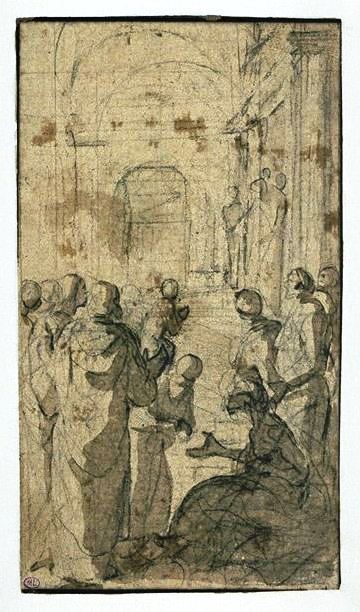
Eugenio Cajés
The Presentation of the Virgin Mary
Musée du Louvre, Département des Arts graphiques
#Eugenio Cajes#Presentation of the Virgin Mary#Virgin Mary#religion#catholicism#New Testament#Bible#history#Baroque#art history#17th century#drawing#sketch#illustration#Spain#Louvre#art
5 notes
·
View notes
Photo

Eugenio Cajés
Study of a Warrior (verso)
Metropolitan Museum of Art, New York
15 notes
·
View notes
Photo
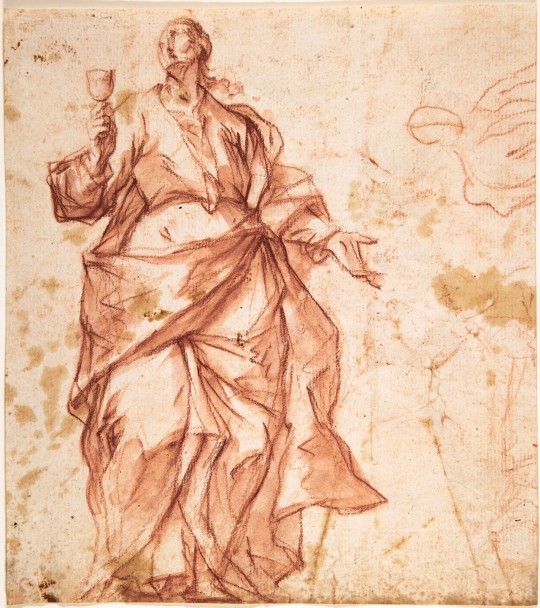
Eugenio Cajés
Saint John the Evangelist (recto)
Metropolitan Museum of Art, New York
#Eugenio Cajes#Saint John#apostle#New Testament#Bible#religion#catholicism#history#Baroque#17th century#Spain#Met#drawing#sketch#illustration#art
31 notes
·
View notes
Photo
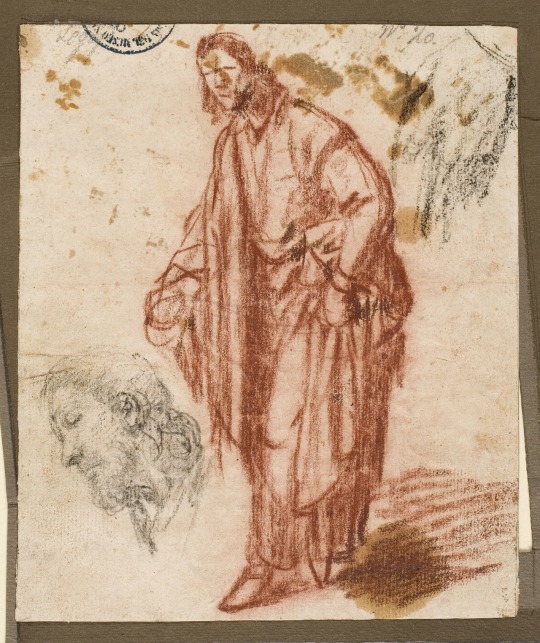
Eugenio Cajés
Saint James the Greater
ca. 1629 - Museo del Prado, Madrid
#Eugenio Cajes#Saint James#apostle#New Testament#Bible#religion#catholicism#art history#Baroque#17th century#history#drawing#sketch#illustration#Prado#Spain#art
19 notes
·
View notes
Photo

Eugenio Cajés
Saint Sebastian
Museo del Prado, Madrid
#Eugenio Cajes#Saint Sebastian#martyr#martyrdom#religion#catholicism#history#Baroque#art history#17th century#Spain#Prado#drawing#sketch#illustration#art
42 notes
·
View notes
Photo
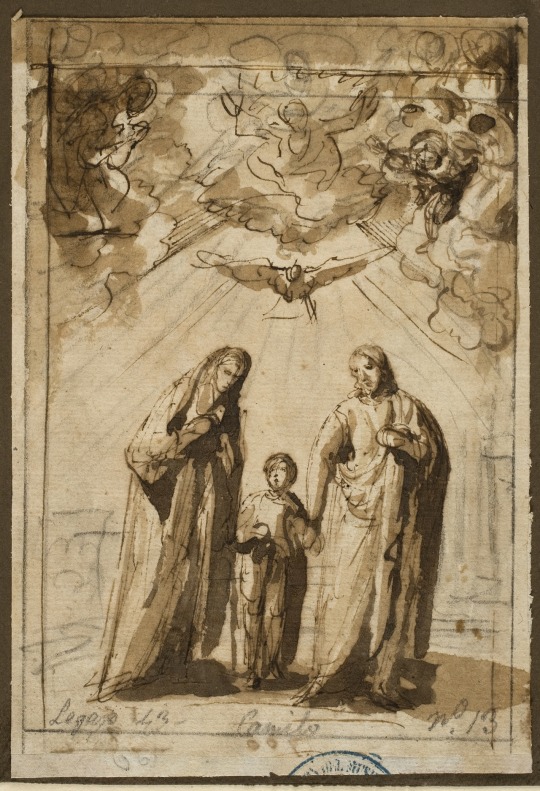
Eugenio Cajés
The Holy Family
Museo del Prado, Madrid
#Eugenio Cajes#Holy Family#Holy Trinity#Jesus#Christ#Virgin Mary#Saint Joseph#God#Holy Spirit#religion#catholicism#history#Baroque#17th century#art history#drawing#sketch#Spain#Prado#art#illustration
93 notes
·
View notes
Photo

Eugenio Cajés
The Holy Family
Preparatory Drawing
Museo del Prado, Spain
#Eugenio Cajes#Holy Family#Virgin Mary#Jesus#Christ#Saint Joseph#New Testament#Bible#religion#catholicism#history#Baroque#17th century#art history#Spain#Prado#art#illustration
38 notes
·
View notes